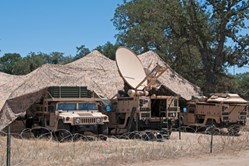Budget Constraints Drive Adoption Of Advanced Interconnects
 By Stephen Webster, industry specialist, Molex Incorporated
By Stephen Webster, industry specialist, Molex Incorporated
Off-the-shelf fiber optic and M12 connectors are enabling military systems to maintain I/O speed performance and reliability in harsh environments.
The first decade of the 21st century saw a sharp increase in terrorist attacks, followed by the United States becoming more heavily involved in the Middle East. As a result, the U.S. government began spending greater amounts on military campaigns and efforts to thwart terrorists. But now that it is winding down its involvement in Iraq and Afghanistan, the U.S. is likely to lower its expenditures on foreign military campaigns. In addition, budgetary constraints such as the Budget Control Act will also prompt decreases in military spending.
An array of faster, smaller, lighter, and cost-effective commercial off-the-shelf (COTS) and modified off-the-shelf (MOTS) products exists that offer economical options to achieve design goals in mission-critical applications. While government purchasing agents must focus on driving down costs by utilizing COTS and MOTS military-grade lines, new equipment still requires rugged, high-performance solutions. Concurrently, technology advancements — such as cargo trucks that do not require human drivers, vehicles that employ on-the-move SATCOM systems, and military computing systems — will increasingly require more advanced system interconnects. Not only must military systems perform at high input/output (I/O) speeds and offer high reliability, they must also function within harsh environments.
Get unlimited access to:
Enter your credentials below to log in. Not yet a member of Photonics Online? Subscribe today.
